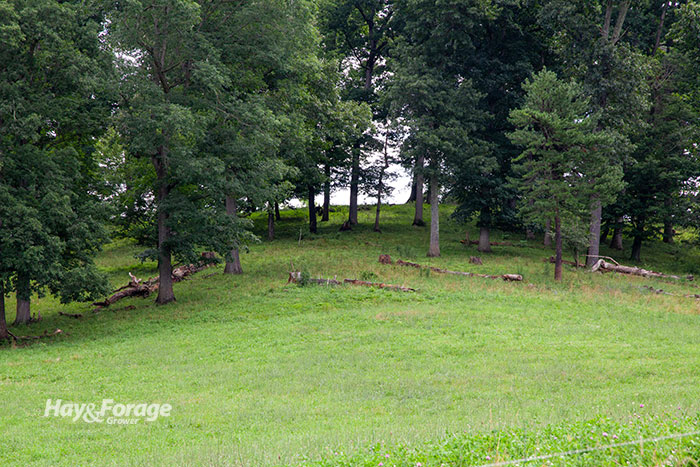Acorns make nice decor but are bad for cattle |
| By Mike Rankin, Managing Editor |
|
|
 It’s not unusual to find various species of oak trees growing within or along the borders of pastures. In such situations, acorns can easily be found scattered on the ground during this time of year. There’s an old saying that “Mighty oaks from acorns grow.” There’s also a less popular saying that “Good cows from acorns die.” The latter mantra stems from the fact that acorns and leaves from the mighty oak tree are toxic to cattle. A fact sheet from the University of Georgia states that, “Most cattle do not preferentially consume acorns; however, there are some cattle that do exhibit a specific liking for them.” Nut-bearing trees such as oaks produce tannins. Gallotannin concentrates in the acorn before dropping from the tree. Once consumed by cattle, gallotannin is degraded in the rumen to yield gallic acid and tannic acid. The tannic acid can cause ulcerations in the animal’s mouth, esophagus, and gastrointestinal tract. Renal tubules are especially sensitive and, if significantly damaged, will result in kidney failure followed by death. According to the fact sheet’s authors, fast-growing and nursing calves often are the first animals to show signs of acorn toxicity. This is because tannins concentrate in the mother’s milk. The first noticeable symptoms often include constipation and a drop in feed intake. Continued exposure to acorns results in ulcerations of the gastrointestinal tract, which will become apparent with black, watery diarrhea. The feces may or may not contain blood and be characterized by a repulsive odor. Calves will be lethargic with swelling in the abdomen and extremities. In the advanced stages, blood may drain from the nose, and calves may have difficulty urinating and defecating. In mature animals, symptoms will be similar to those of calves but with the addition of lower milk output in lactating cows and the potential for birth defects in calves born to poisoned, pregnant cows. The symptoms of acorn toxicosis are very similar to bovine viral diarrhea (BVD) Type 2. The major differentiating factor is the presence or absence of a fever. Type 2 BVD is characterized by an elevated body temperature while acorn toxicosis often presents with little or no fever. Treatments are limited There are no accepted treatments for reversing the effects of acorn toxicosis other than to remove animals from areas accessible to acorns and providing proper care to improve survival rates. If acorn toxicosis is suspected, contact your veterinarian. Provide fluids and electrolytes to enhance kidney function. If urination stops, kidney function has likely ceased and death will follow soon after. If constipation is observed, a single dose of mineral oil may be used as a laxative. A broad–spectrum antibiotic can be administered to prevent infections from the ulcerations of the gastrointestinal tract. Consult a veterinarian to ensure the antibiotic doesn’t metabolize in the kidney, as this could make the kidney damage even worse. Prevention is the best defense against acorn toxicosis. During the fall, move cattle out of pastures with oak tree access. Temporary fencing can be used to keep cattle away from oak timber during the fall and early winter. If fencing away from oak trees isn’t possible, a modified supplement can be fed. Cattle need to consume approximately 0.4 pounds per day of hydrated lime (calcium hydroxide) to counter the ill effects of acorns. Molasses will be a necessary supplement component to bind up the relatively high, unpalatable fraction of hydrated lime. Grazing cattle will need to be slowly adapted to the high-lime supplement to avoid metabolic disorders. Hydrated lime will not cure poisoned animals, but research has shown some success in preventing toxicosis. Finally, ensure high–quality forage is available either in the form of winter grazing, hay, or haylage. This will help prevent cattle from scavenging acorns. In extreme cold, the incidence of acorn toxicosis tends to drop. It’s not because tannin levels decrease as winter sets in, but rather because acorns decay and become less desirable to animals. |
